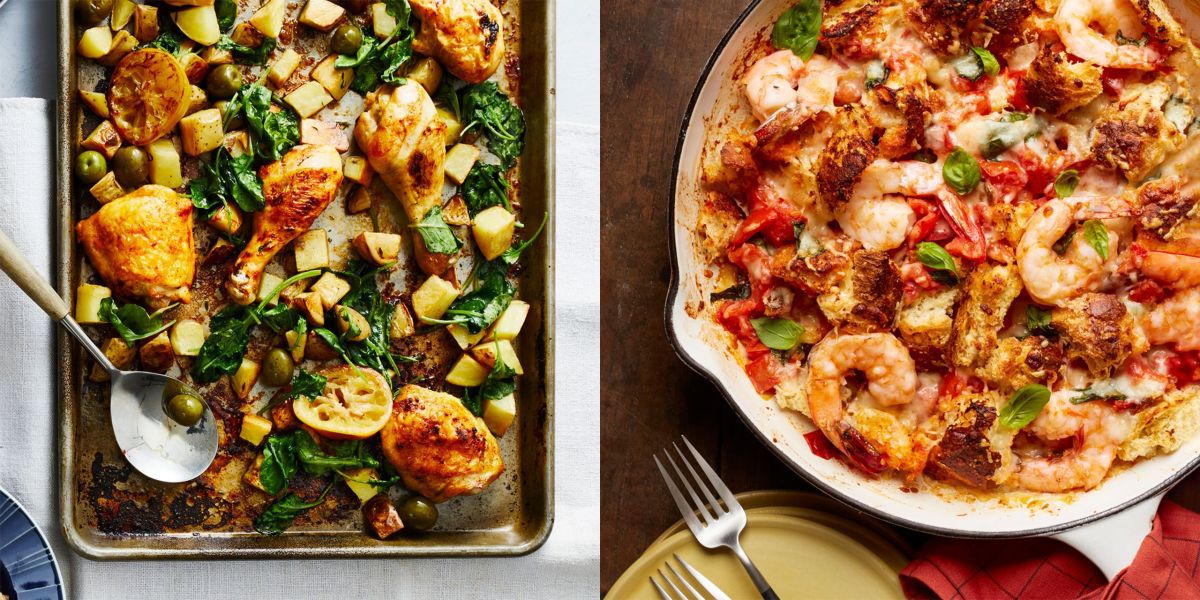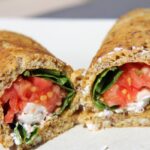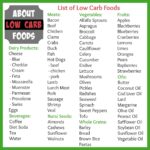Tired of restrictive diets that leave you feeling hungry and deprived? Discover a world of delicious, quick, and easy low-carb recipes designed to support your weight management goals. This guide provides a vibrant collection of breakfast, lunch, dinner, and snack options, all crafted to keep you satisfied and energized without sacrificing flavor. We’ll explore meal prepping strategies, ingredient substitutions, and even photography tips to help you create your own low-carb culinary journey.
From satisfyingly savory stir-fries to delightfully sweet (yet low-carb!) treats, we’ll equip you with the knowledge and recipes to navigate the world of low-carb eating with confidence and ease. Each recipe is meticulously detailed, offering nutritional information and step-by-step instructions, making healthy eating accessible and enjoyable, regardless of your cooking skill level. Prepare to embark on a flavorful adventure towards your weight maintenance aspirations!
Quick Breakfast Recipes
Starting your day with a low-carb breakfast sets the stage for successful weight maintenance. These recipes are designed to keep you feeling full and energized without derailing your dietary goals. They prioritize nutrient-dense ingredients to provide sustained energy and essential vitamins and minerals.
Three Quick Low-Carb Breakfast Recipes
Below are three delicious and easy low-carb breakfast options, complete with nutritional information to help you track your macros. These recipes are designed for quick preparation, perfect for busy mornings.
| Name | Ingredients | Instructions | Approximate Calories |
|---|---|---|---|
| Scrambled Eggs with Spinach and Feta | 2 large eggs, 1 cup spinach, 1 oz feta cheese, 1 tsp olive oil, salt and pepper to taste | Sauté spinach in olive oil until wilted. Whisk eggs with salt and pepper. Add spinach to eggs and scramble until cooked through. Crumble feta cheese on top. | ~200 |
| Avocado and Egg Boats | 2 avocados, 2 eggs, salt and pepper to taste | Halve avocados and remove pits. Crack an egg into each avocado half. Season with salt and pepper. Bake at 375°F (190°C) for 15-20 minutes, or until eggs are set. | ~250 |
| Chia Seed Pudding with Berries | 1/4 cup chia seeds, 1 cup unsweetened almond milk, 1/2 cup mixed berries (strawberries, blueberries, raspberries), sweetener to taste (optional, consider stevia or erythritol) | Combine chia seeds and almond milk in a jar or container. Stir well and refrigerate overnight. In the morning, top with mixed berries and sweetener (if using). | ~180 |
Visual Description of a Low-Carb Breakfast Dish
Imagine a vibrant plate showcasing two perfectly poached eggs nestled atop a bed of wilted spinach. A sprinkle of creamy, salty feta cheese adds a touch of white, contrasting beautifully with the deep green of the spinach and the sunny yellow of the egg yolks. The absence of bread or starchy components visually emphasizes the low-carb nature of the dish, highlighting the protein-rich eggs and the nutrient-packed spinach as the stars of the meal. A light drizzle of olive oil adds a subtle sheen, enhancing the overall appeal.
Benefits of Each Breakfast Recipe for Weight Maintenance
Each recipe contributes to weight maintenance through different mechanisms. The Scrambled Eggs with Spinach and Feta provides a high protein content, promoting satiety and preventing overeating later in the day. The high protein and healthy fats in the Avocado and Egg Boats offer sustained energy and contribute to feeling full. The Chia Seed Pudding with Berries provides fiber, which aids in digestion and contributes to a feeling of fullness, while the berries add antioxidants and natural sweetness without excessive carbohydrates. All three options are nutrient-dense, ensuring you’re getting essential vitamins and minerals to support your overall health and well-being.
Speedy Lunch Ideas
Maintaining a low-carb diet doesn’t mean sacrificing delicious and convenient lunches. These recipes are designed for quick preparation and are perfect for meal prepping, ensuring you have healthy, satisfying lunches ready throughout the week. They emphasize fresh ingredients and minimize cooking time, ideal for busy schedules.
The following recipes offer a variety of flavors and textures, ensuring your low-carb lunch routine remains exciting and satisfying. Each recipe is carefully balanced to provide sufficient protein and fiber, contributing to sustained energy levels and aiding in weight management.
Five Quick Low-Carb Lunch Recipes
These five recipes are designed for easy meal prepping, allowing you to enjoy delicious and healthy low-carb lunches throughout the week. Preparation times are estimates and may vary slightly depending on individual skill and kitchen setup. Serving sizes are suggestions and can be adjusted based on individual needs.
- Mediterranean Quinoa Salad (Prep time: 15 minutes, Serving size: 1.5 cups): A vibrant mix of cooked quinoa (ensure you’re using a low-carb variety or adjusting portions accordingly), chopped cucumber, tomatoes, Kalamata olives, crumbled feta cheese, and a lemon-herb vinaigrette. The bright colors of the vegetables create a visually appealing and refreshing lunch.
- Chicken and Avocado Salad Lettuce Wraps (Prep time: 10 minutes, Serving size: 2 wraps): Shredded cooked chicken breast mixed with mashed avocado, a squeeze of lime juice, and a pinch of salt and pepper. This mixture is then served in crisp lettuce cups for a low-carb, satisfying wrap alternative. The creamy avocado pairs perfectly with the lean chicken.
- Tuna Salad Stuffed Avocados (Prep time: 5 minutes, Serving size: 1 avocado): Mix canned tuna (in water, not oil) with mayonnaise (look for low-carb options), celery, and onion. Stuff this mixture into halved avocados for a creamy, protein-packed lunch. The vibrant green of the avocado provides a beautiful contrast to the tuna salad.
- Leftover Steak and Veggie Salad (Prep time: 5 minutes, Serving size: 1.5 cups): Slice leftover grilled steak and combine it with mixed greens, bell peppers, and a simple vinaigrette. This is a quick and easy way to repurpose dinner leftovers into a satisfying lunch. The hearty steak provides substantial protein.
- Caprese Salad Skewers (Prep time: 10 minutes, Serving size: 6 skewers): Thread cherry tomatoes, fresh mozzarella balls, and basil leaves onto skewers. Drizzle with balsamic glaze for a simple yet elegant lunch. The vibrant red and green colors make this a visually appealing option.
Recipe Comparison
This table compares the five recipes based on protein content, fiber content, and overall preparation time. Note that the values are approximate and can vary based on specific ingredients and portion sizes.
| Recipe | Protein (grams, approximate) | Fiber (grams, approximate) | Prep Time (minutes) |
|---|---|---|---|
| Mediterranean Quinoa Salad | 15 | 5 | 15 |
| Chicken and Avocado Salad Lettuce Wraps | 30 | 4 | 10 |
| Tuna Salad Stuffed Avocados | 25 | 6 | 5 |
| Leftover Steak and Veggie Salad | 35 | 3 | 5 |
| Caprese Salad Skewers | 10 | 2 | 10 |
Meal Prepping and Storage
Efficient meal prepping is key to enjoying these lunches throughout the week. Preparing components in advance, such as cooking chicken or quinoa, significantly reduces daily prep time. Proper storage ensures freshness and food safety.
For instance, cooked chicken and quinoa can be stored in airtight containers in the refrigerator for up to 4 days. Vegetables like bell peppers and cucumbers can be chopped and stored separately, maintaining their crispness for a couple of days. Assemble salads and skewers the night before or the morning of, ensuring a quick and easy lunch. Reheating can be done in the microwave or by simply letting the food come to room temperature.
To maintain the quality of the prepared lunches, using appropriate storage containers is crucial. Airtight containers prevent spoilage and maintain freshness. Additionally, labeling containers with the date of preparation is a helpful way to ensure food safety and prevent consuming outdated meals.
Fast Dinner Options

Maintaining a low-carb diet doesn’t mean sacrificing delicious and satisfying dinners. These quick recipes offer variety and flavor, perfect for busy weeknights while supporting your weight maintenance goals. Remember to adjust portion sizes to meet your individual caloric needs.
Grilled Salmon with Asparagus
Ingredients: 2 salmon fillets (6 oz each), 1 bunch asparagus, 1 tbsp olive oil, salt, pepper, lemon wedges.
Instructions: Preheat grill to medium-high. Toss asparagus with olive oil, salt, and pepper. Grill asparagus for 5-7 minutes, turning occasionally. Place salmon fillets on the grill and cook for 4-6 minutes per side, or until cooked through. Serve with lemon wedges.
Substituting ingredients is easy! For a spicier kick, add chili flakes to the asparagus. Cod or halibut can replace salmon for a different flavor profile. Broccoli or green beans are excellent asparagus alternatives. Remember, portion control is key. Sticking to a 6-ounce salmon fillet helps manage calorie intake effectively.
Baked Chicken and Vegetables
Ingredients: 4 boneless, skinless chicken breasts, 1 cup broccoli florets, 1 cup cauliflower florets, 1/2 cup cherry tomatoes, 2 tbsp olive oil, salt, pepper, garlic powder.
Instructions: Preheat oven to 400°F (200°C). Toss vegetables with olive oil, salt, pepper, and garlic powder. Spread vegetables in a baking dish. Place chicken breasts on top of the vegetables. Bake for 25-30 minutes, or until chicken is cooked through.
This recipe is incredibly versatile. Feel free to swap out the vegetables with zucchini, bell peppers, or Brussels sprouts. For added flavor, marinate the chicken in lemon juice and herbs before baking. Using smaller chicken breasts helps manage portion sizes, ensuring you consume a moderate amount of protein without excess calories. This approach aids in successful weight management.
Stir-fried Beef and Shirataki Noodles
Ingredients: 8 oz beef sirloin, thinly sliced, 1 package (7 oz) shirataki noodles, 1/2 cup broccoli florets, 1/2 cup sliced bell peppers, 2 tbsp soy sauce (low sodium), 1 tbsp sesame oil, 1 clove garlic, minced.
Instructions: Rinse and drain shirataki noodles. Heat sesame oil in a wok or large skillet over medium-high heat. Add beef and stir-fry until browned. Add garlic, broccoli, and bell peppers; stir-fry for 2-3 minutes. Add shirataki noodles and soy sauce; stir-fry until heated through.
This recipe offers a satisfying alternative to traditional high-carb noodle dishes. Ground beef can replace sirloin for a different texture. Cauliflower rice can substitute for the shirataki noodles, offering a slightly different mouthfeel. Experiment with different low-carb vegetables like mushrooms or spinach to add variety and nutrients. Maintaining a mindful portion of beef ensures you balance protein intake with overall calorie consumption for effective weight maintenance. A smaller serving of the stir-fry is advisable for portion control.
Mastering the art of quick and healthy low-carb cooking doesn’t have to be daunting. This guide has provided you with a toolkit of recipes and strategies to effortlessly maintain your weight while indulging in delicious, satisfying meals. Remember, consistency and mindful portion control are key. By embracing the versatility of low-carb cuisine, you can create a sustainable and enjoyable eating pattern that supports your overall well-being. So, get cooking, experiment with flavors, and enjoy the journey towards a healthier, happier you!
FAQ Corner
Can I still enjoy desserts on a low-carb diet?
Absolutely! Many low-carb dessert recipes utilize alternative sweeteners and ingredients to create delicious treats that fit within your dietary plan. Look for recipes using almond flour, coconut flour, or sugar substitutes.
How do I manage cravings on a low-carb diet?
Staying hydrated, consuming adequate protein and healthy fats, and focusing on whole, unprocessed foods can help manage cravings. Planning ahead with healthy low-carb snacks can also prevent impulsive, unhealthy choices.
What are the potential side effects of a low-carb diet?
Some individuals may experience temporary side effects like fatigue, headaches, or constipation (the “keto flu”) in the initial stages. Staying well-hydrated and gradually reducing carbohydrates can help mitigate these effects. Consult your doctor before making significant dietary changes.
Are low-carb diets suitable for everyone?
Low-carb diets may not be suitable for everyone. Individuals with certain medical conditions should consult their doctor before starting a low-carb diet. It’s crucial to listen to your body and adjust the plan as needed.


